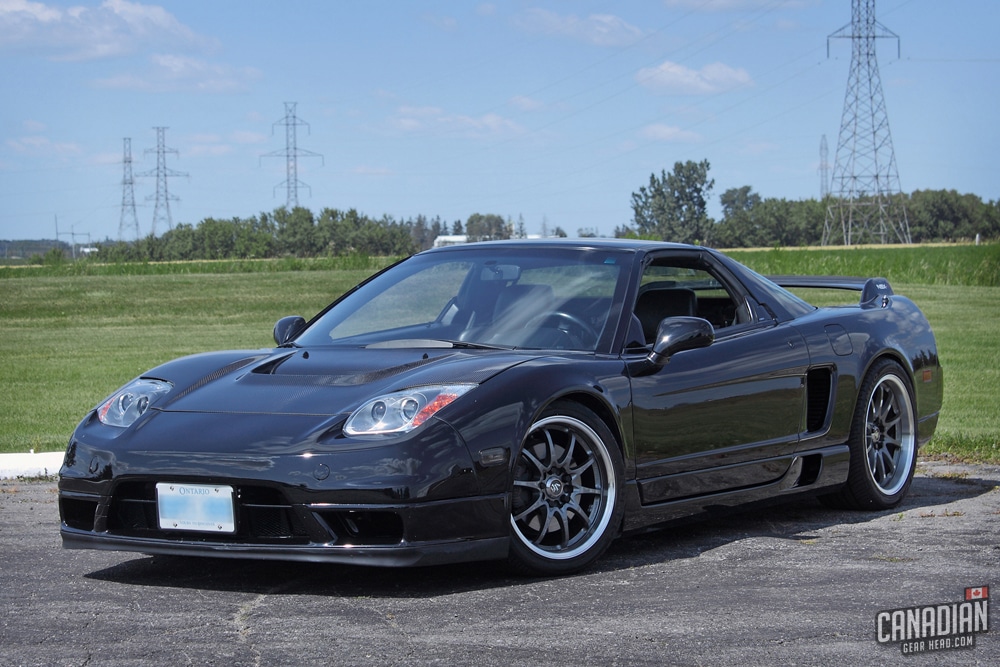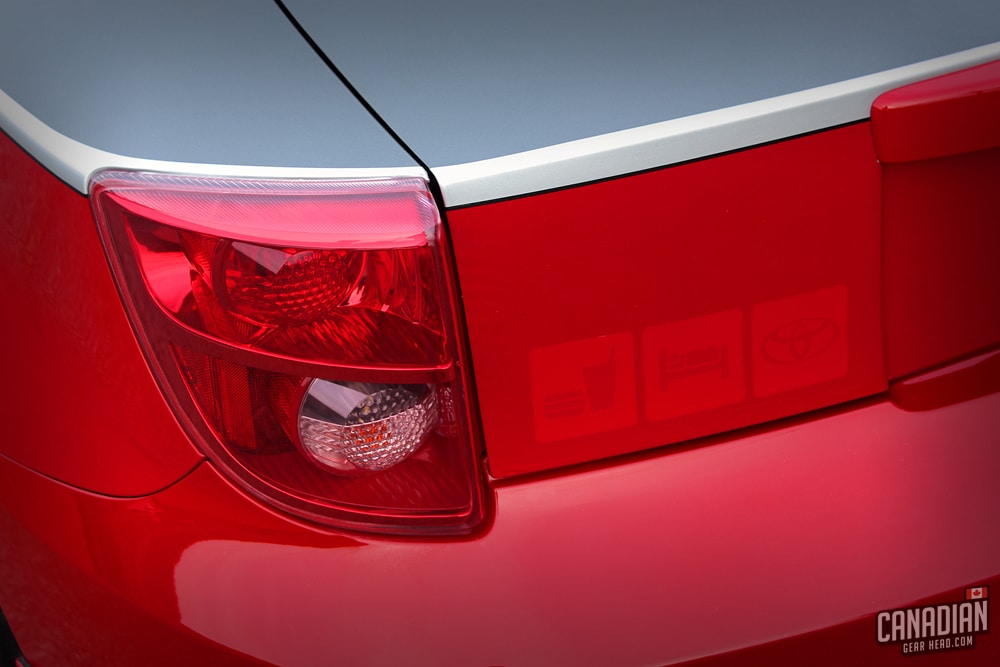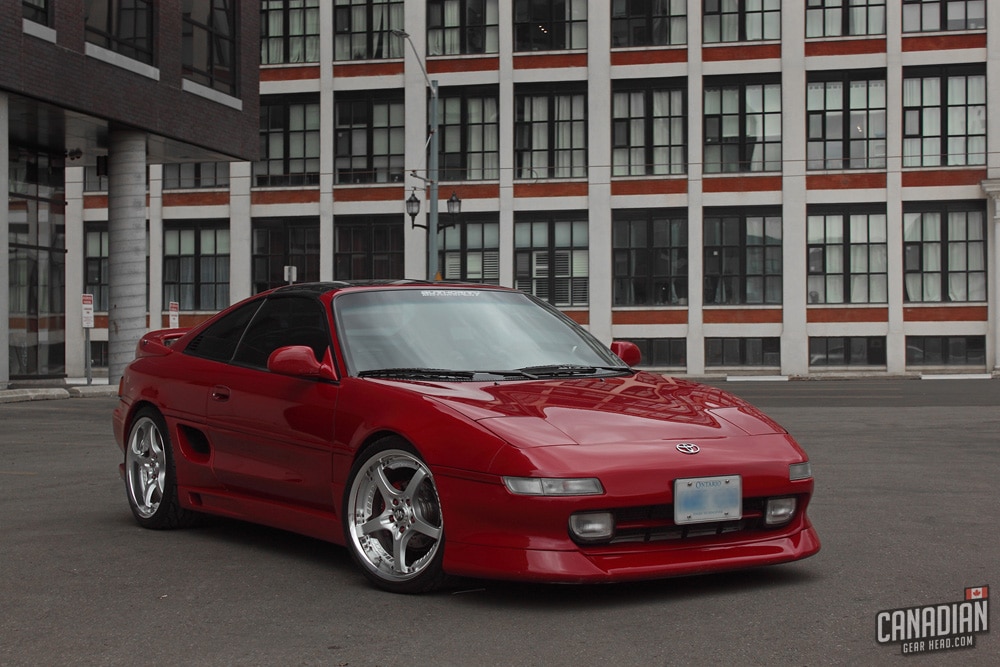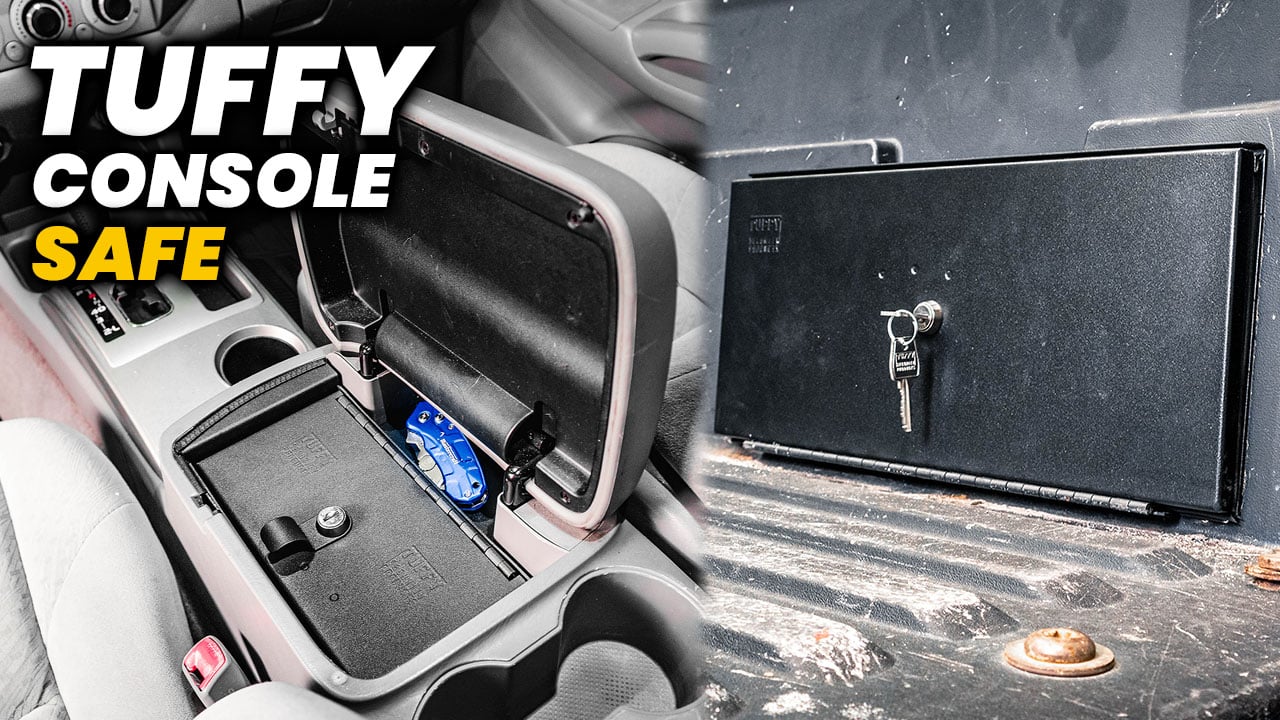If you’re considering a paint correction for your vehicle, read this first! I think it’s safe to say that any of us that are into detailing would love for our cars to be as close to perfect as possible. But sometimes that’s not a realistic (or safe) goal to have. Today I want to talk to you about the dangers of chasing perfection with paint correction, and why it’s better to leave some things alone. Let’s dig in.
This isn’t a topic that’s talked about very much online, but I think it’s very important. I have this chat with nearly everybody before polishing their car. Many people, both pro detailers, and enthusiasts tend to think narrow-mindedly about what can and should be done to vehicles in terms of detailing. They are only concerned with getting a good result immediately after the work is done and nothing more. I think this is a mistake. A big one.
“Being a good detailer means knowing what NOT to do.” – Larry Kosilla, AmmoNYC
You see, my theory when it comes to caring for cars is that we should always have their long-term lifespan in mind. Believe it or not, there are some consequences to different aspects of detailing (especially paint correction). We need to carefully weigh the pros and cons when deciding how far to chase a scratch. We’ve got a lot to lose by over polishing our cars.
The Truth About Paint Correction:
There is in fact, a downside here. Does paint correction remove paint from the vehicle? Absolutely. There’s no way around it. Removing paint is actually the name of the game. I once had a neighbor yell to me from across the street: “You’re going to buff the paint right off that thing!”. My response? “That’s the plan!”
Paint correction is not something to be taken lightly. The paint on our vehicles is extremely thin to begin with. In general, a factory-painted car will have somewhere around 25 microns of clear coat. To put that in perspective, a single sheet of copy paper is more than twice as thick. Does that scare you? It should.
Now to put even more fear in you, most American automakers will void the paint’s warranty when less than half of the clear coat has been removed. That means that they believe the strength of the clear coat and its ability to protect against UV rays is significantly compromised at that point and will eventually result in clear coat failure. Yes, your clear coat can fail even if you didn’t burn through it initially.
Let that sink in for a minute. This is serious stuff. Over polishing your car can be catastrophic. We’re using powerful tools and abrasive compounds to purposely remove material from a very thin layer of paint. Now you know why paint correction is so expensive. It’s also why you need to be very careful of who you trust to do the job.

How Does Paint Correction Work?
Allow me to clear up a common misconception. By polishing a car, we aren’t “pulling” scratches out. We aren’t wiping them away. Although heat is a byproduct of polishing, we aren’t using it to “melt” the paint into becoming smooth again.
We’re simply leveling the surface of the paint. To remove a scratch, the paint around it needs to be removed until it’s flush with the deepest point of the scratch. That’s what makes paint correction so dangerous, and why chasing perfection is often a bad idea. If a scratch is 10 microns deep, you’ll need to remove 10 microns of paint around it for it to disappear completely.
Compounding and wet sanding are what remove the most material, which is why we use them to eliminate scratches in a major paint correction. They have abrasives in them similar to grains of sand that are designed to scour the surface. In contrast, finishing polishes that are often used as a one-step correction tend to rely more on polishing oils rather than abrasives. That makes them much more safe to use often because they remove a nearly immeasurable amount of paint.
Scratch removal comes at a price. The closer you come to perfection, the closer you come to removing all of your clear coat. It’s tough to find the balance between removing noticeable scratches and keeping as much of the protective clear coat as possible. That’s where knowledge and experience come in.
So How Many Times Can You Polish Your Car?
This is the million dollar question and I wish I could give you a definitive answer. The truth is, I can’t. Nobody can. There are way too many variables at play so a general answer is impossible. The best rule to follow would be “The fewest number of times possible in order to have it look the way you want.” Remember, clear coat won’t magically grow back – once it’s gone, it’s gone.
In my opinion, the goal should be to perform one major paint correction to get the surface as close to perfect as safely possible, then maintain it with a light one step polish every couple of years.
The key to making this possible is to care for the paint the best we can in the meantime. Putting fewer scratches in means fewer scratches will need to come out. This is why I urge you to dial in your wash process as much as possible to avoid causing damage. In the grand scheme of things, that seemingly simple act can make or break the longevity of your paint job.

Vehicle Categories and Why They Matter
Before we get to that, we need to understand what category the specific vehicle falls into. I like to think that there’s 3 different types of vehicles out there (that are cared for in the manner that we discuss here on Canadian Gear Head): Daily Drivers, Special Interest Vehicles, and Rare/Irreplaceable Vehicles. Each one of these has a different set of rules to follow.
Daily Drivers
I could really break this one down further into 2 categories actually. For some people, their daily driver is replaced often with the latest and greatest version. They’re disposable. These people aren’t too concerned with how long their vehicle will last because they’ll be getting rid of it every few years.
The other type of owner is the one that keeps their daily driver for as long as possible. Ol’ Faithful. It’s their companion. This vehicle is tried and true and is well cared for as a reward for its loyalty.
Special Interest Vehicles
This category covers pretty much any vehicle that is primarily used for pleasure. Mass produced sports cars, modified cars, motorcycles etc. These generally receive better care than daily drivers. These vehicles are often garage kept and rarely see snow or even rain. Overall, they’re driven less, exposed to fewer elements, and cared for more.
Rare/Irreplaceable Vehicles
Few vehicles fall into this rather small category. This one is for the collector cars. The all-original, uber low mileage cars. Museum cars. The priceless pieces of automotive history. And more often than not, the extremely expensive cars. These are the ones that you can’t simply go out and buy new parts for. Not only does every single nut and bolt matter on these, but it greatly affects their value.
Unlike daily drivers, these vehicles will likely last forever. You won’t find an Aston Martin DB5 in your local junkyard. The car community just isn’t willing to give up on cars like that. Instead, we’ll keep caring for them and repairing them in order to preserve them for future generations.
Different Cars Require Different Strategies
You can probably see where I’m going with this now. You can’t treat a rare car the same way you would a daily driver that will be tossed aside after a few years. If the person you’re going to hire to do a paint correction tells you they use 1 compound, 1 pad and use it the exact same way every time, run. Run like the wind. They might produce great looking results, but your paint could be compromised much more than it needs to be.
I have a specific conversation with the owner of every vehicle I polish. I don’t just want to know things like whether the car has ever been repainted or how much they want to spend. That stuff is obvious. I want to know all about their connection to the car. I want to know the car’s history. And I want to know what they have in mind for the car’s future. If any of these things are important to the owner, they need to be important to me.
The thing is, it isn’t up to me to decide which of the above categories a vehicle belongs in. I want to know which one the owner feels it should be classified in. The reason I say that is because the owner’s perception of the car is sometimes more important than the actual facts.
For example:
Someone wants to have the swirl marks removed from their 2007 Ford F150. Sure, it could easily be put into the daily driver category, but we need to know more about the owner. It turns out, this truck was previously owned by a close family member of theirs that passed away.
To us, it’s one of a million F150s on the road. To them, it’s a priceless family artifact that could never be replaced. Rather than buzz the paint down with an aggressive compound to save time, I would put this truck in the Rare/Irreplaceable category and carefully get the results they wanted with the least amount of polishing possible.
Yes, it would be quicker and cheaper to mow the paint down aggressively. But think about how that would affect the truck in the long run. A few years later, the clear coat might fail due to being too thin. When that happens, the family will be forced to either look at the damaged paint (and potentially feel guilty for letting it happen) or have it repainted. Repainting a vehicle like this could take away some sentimentality, making it feel like any other truck out there.
That’s just one specific example. Maybe it’s the owner’s first car from back in high school. Maybe it’s a sports car from the 90’s that due to its rare color combo, is believed to be 1 of only 30 ever made. Or maybe it’s a brand new Mercedes C-class that the owner will be turning back in when the lease is up in 3 years. These all need to be cared for differently.
Some things that are in my head when I’m deciding on the game plan for polishing a car:
- Age of the vehicle
- Mileage
- How well the vehicle is cared for and maintained (likelihood of it being damaged again)
- How often the vehicle sits out in the sun
- The owner’s desired results (slight improvement, enhancement, complete correction etc)
- Does the vehicle have the original factory paint and if so, does that add value to it?
- If it’s been repainted, how much clear coat was applied? (Show cars, for instance, tend to have many layers of clear to allow for any texture to be wet sanded to perfection)
- How long the person has owned it
- How long the person plans to own it in the future
- Rarity of the vehicle
- Sentimental value of the vehicle
- Has the paint ever been corrected before and if so, how aggressive? (Wet sanded or compounded)
This is all on top of the things I’m considering related to the actual job: what pad/polish combo to use, thickness of paint, depth of scratches, weather conditions, hard vs soft paint, managing residue etc.

How Each Category Should Be Handled:
This is just a rough guide to show you how these vehicles should be treated. Every car/truck/bike is different and needs to be examined to decide the best way to get the desired results.
Daily Drivers
Once again, we’ve got 2 different types of daily drivers. The way we need to handle them couldn’t be more different. Daily drivers see more UV rays, weather, and overall abuse than the other categories so they need the most protection. Unless your car is disposable to you, it’s crucial to retain as much of the clear coat as possible.
For cars that are treated like appliances and are replaced often, we can get away with being a bit more aggressive. A mild compound like Meguiar’s D300 is perfect for vehicles like this because it’ll blast away most of the typical defects that late model daily drivers are plagued with. The beauty of D300 is that it finishes down pretty nicely. That means you can save a bunch of time by just doing a quick polish after using it.
If I find one of these cars is likely to be damaged again soon, there’s no point in me spending the time and the owner spending the money on a paint correction. Most of these owners are simply looking for a shiny car, so an all-in-one product like HD Speed is a great option for them. It will bring out a bunch of gloss and take up a fraction of the time.
For daily drivers that will be kept for a long period of time, it’s important to leave as much clear coat on the car as possible. This means that right from the initial “new car prep”, my goal is to only ever have to do single step corrections periodically on it every few years. In order for this to happen, the owner needs to be vigilant about not adding any deeper scratches or defects.
As long as the damage only ever consists of swirl marks and marring, the vehicle will never need to be compounded. This will give the clear coat the best odds of not failing many years in the future. Sonax Perfect Finish is a very popular polish used for single step corrections.
In general, I try to avoid any wet sanding on daily drivers. If I do, it’s usually just in spots to improve (not remove) certain types of scratches. Never any lower than 1500 grit though, and even that’s pushing it.
Special Interest Vehicles
Since these types of vehicles aren’t usually exposed to the elements as much as a daily driver, it’s possible to dig into the clear coat a little bit more if you need to. We still don’t want to push it anywhere near the limits though. A little compounding on a mass-produced sports car that’s garage kept is acceptable. Call me old school, but I tend to stick with the classic Meguiar’s M105 and M205 combo on these.
High-end exotic cars often have ceramic coatings and/or paint protection films applied which help to extend the life of the clear coat. Many of these cars are handmade which means 2 things: they usually have thicker paint than robot-painted cars and they’re also riddled with leftover sanding and polishing marks from the factory. The bad news is that they’ll require some compounding to remove. The good news is that there should be plenty of paint to compound.
Extra time often needs to be spent on modern sports cars and super cars. Why is that? Mainly because of current styling and aerodynamic trends. These cars have angles and contours everywhere and it takes extra care to tape them off properly and avoid getting polish in all the cracks and crevices. For instance, pro detailers are quickly learning that the new Mclaren 720s takes a long time to polish. Most of the car needs to be done using a smaller pad and machine in order to fit in all of the tight areas!
If a show car has been repainted, it usually has lots of clear coat to work with. In many cases, plenty of wet sanding will be done to eliminate as much texture (or orange peel) as possible. The fact is, the flatter the surface, the more gloss and depth it will have. When you’re trying to score points with the judges, that matters. These cars can usually be wet sanded, compounded and polished to your heart’s content.
It’s important to know how much paint you’re working with when trying to remove scratches and defects from these types of cars. Out of the 3 categories, this is the one that we’re usually aiming for the closest to perfection. A mistake here could be very costly. Unless you’re experienced enough to be able to trust your gut, I would highly recommend using a paint depth gauge in order to stay safe.
Rare/Irreplaceable Vehicles
The key to working on this type of car is to touch it the least amount possible. The rules are different on a lot of these. For example, the rules are backwards for a car like a Short Wheelbase Ferrari from the 60’s. A car with slightly damaged but original paint will be worth more money than a car that’s flawless but has been repainted.
Authenticity is huge for this type of historic car so paint correction should be avoided completely in some rare cases. We’ve been taught that covering up scratches with a glaze rather than removing them properly is the poor man’s fix. But on these cars, sometimes it’s the only option. If you have a fragile car with thin paint, the risk of damage is huge. And repainting one of these cars can cause its value to take a major hit. That’s a big deal when you’re talking about $1 million + cars!
If one of these cars has already been repainted in the past, the value has already been adjusted. Plus, aftermarket paint jobs offer us much more leeway when it comes to paint correction. Lots of care still needs to be taken though, because repairs will still be very expensive.
A very strange example of a rare/irreplaceable vehicle is my own MR2. Its value is nowhere near the same hemisphere as most of these cars, but to me, it’s 1 of 1. Myself and this car have been connected for many years, so it has sentimental value. It’s also highly modified and has VERY soft and thin original paint that I would prefer to keep. For these reasons, this car has been pushed into this category and requires a high level of care. Hopefully, that helps to explain why the owner’s perspective matters so much.

Moving Forward:
If you’ve made it this far, you should understand by now that paint correction shouldn’t be done often in order to keep your vehicle looking “fresh”. Much like using a clay bar, it should only be done when it’s absolutely needed.
To be honest, even if we could make our vehicles look perfect without the risk of any damage, I still don’t think we should. Minor damage like scratches and chips in the paint add character to a car. If you use it, it’s ok for it to look used!
Trying too hard to have it constantly look perfect is a losing battle. Scratches are going to happen. Rock chips are going to happen. We just need to manage these realities in a way that allows us to still be able to look back at our car as we walk away and admire them. That’s what matters.
Don’t get me wrong, wanting your vehicle to look its best is totally fine. But most of the time, “its best” is far from perfect. Leaving a few random scratches in an otherwise beautiful original paint job is always going to be a better option than pushing too far and having to repaint the car. Plus, we can minimize the remaining scratches by rounding off the edges to make them much less noticeable.
Hopefully, this post has given you a bit more of a clear outlook on the reality of paint correction. If I scared you, I apologize but that was intentional! Most extreme sports athletes will tell you “if you’re about to do this and you don’t feel fear, something is wrong”. The same applies if you’re about to take a polisher to your paint job.
We don’t need to be intimidated, but we do need to respect the process and all of the factors that go into it. In my opinion, the longevity of our paint is more important than its appearance. That frame of mind is what will keep you safe when polishing your car.
Perfection is overrated. Having a vehicle that looks amazing, retains its value and allows you to sleep well at night is where it’s at. If your car has a story to tell, allow it to tell it.

Tim is the creator of Canadian Gearhead. His experience with auto detailing and working for Toyota shows through all of the articles posted here. He runs the Canadian Gearhead site and YouTube channel full-time now and currently owns a 2007 4runner, 2006 Tacoma, and 1991 MR2. Read more about Tim:





Leave a Reply